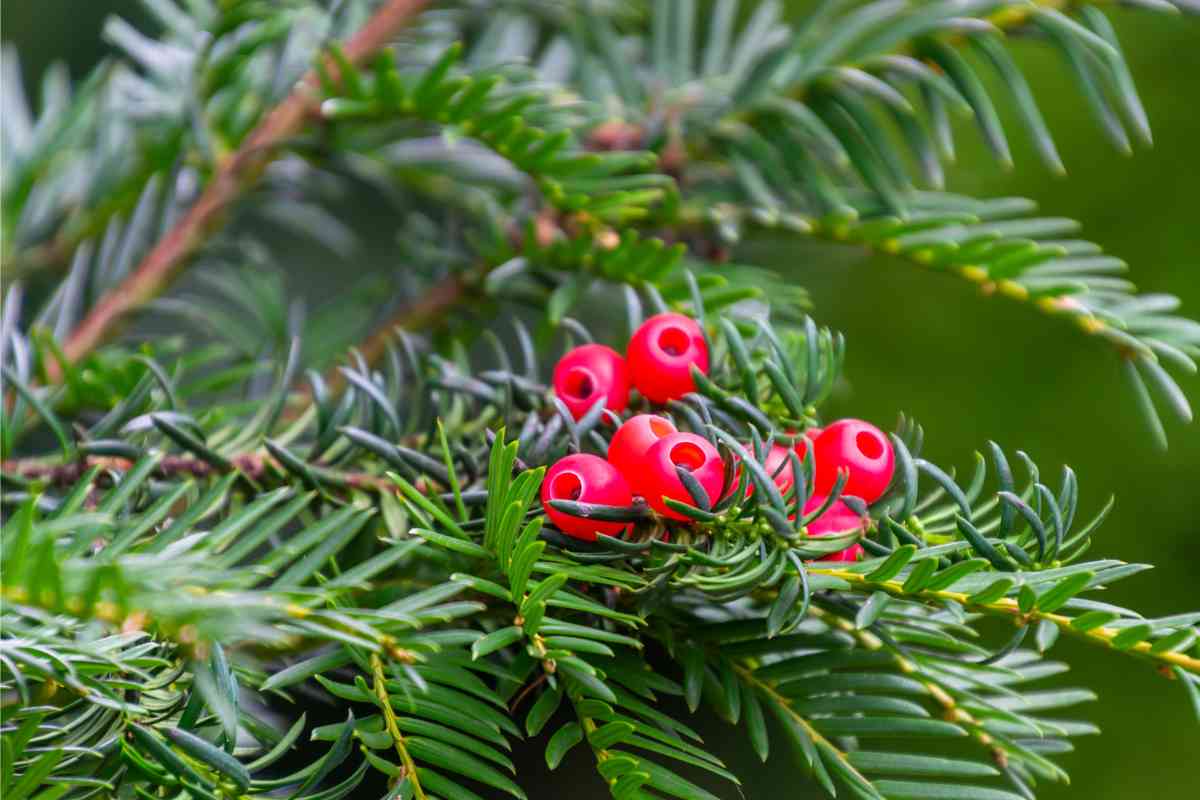With their gracefully arching branches, dense evergreen foliage, and attractive red berries, English yew trees make a striking addition to any landscape Their versatility and hardy nature also make them quite easy to incorporate into a variety of garden designs
If you’re thinking of purchasing an English yew for your yard, here is a comprehensive guide covering everything you need to know before buying one of these elegant conifers.
Overview of the English Yew
The English yew (Taxus baccata) is a conifer native to central and southern Europe. It is an evergreen tree that can reach heights of 50-70 feet with a 30 foot spread, though 10-20 feet is more common. The foliage consists of dark green needle-like leaves arranged in a flattened spray.
The English yew is dioecious, meaning male and female flowers occur on separate plants. Only female yews produce the scarlet, berry-like arils that encase the toxic seeds. The foliage is also poisonous, except for the red fleshy arils.
These trees are slow-growing but extremely long-lived. Maturity can take up to 20 years but lifespans over 600 years are not unheard of. Their natural pyramidal habit and ability to tolerate pruning make them ideal for hedges and topiaries.
Deciding Where to Buy an English Yew
English yews are sold by reputable online nurseries and garden centers across the United States. Here are some tips for deciding where to buy yours:
-
Local nurseries allow you to select specific plants in person but may have limited selection. Order early for best availability.
-
Online mail order nurseries offer wider selection and inventory but cannot be inspected before shipping. Look for generous guarantees and customer reviews.
-
Purchase from nurseries located in your USDA hardiness zone for trees better acclimated to your climate.
-
Inspect trees carefully upon delivery and plant right away. Do not leave unattended for long periods before planting.
Selecting an Ideal Cultivar
There are over 250 cultivars of English yew to choose from. Popular selections include:
-
‘Hicksii’ – tall, narrow columnar form perfect for hedging
-
‘Semperaurea’ – compact mounded form with golden foliage
-
‘Dovastoniana’ – broad pyramid with twisted branching
-
‘Fastigiata’ – very upright, narrowly columnar habit
-
‘Repandens’ – wide-spreading cultivar with horizontal branching
Consider the intended use, available space, and desired aesthetics before deciding on a particular variety.
Preparing the Planting Site
English yews thrive in full sun to partial shade and reasonably moist, well-drained soil. Amend clay or sandy soils before planting to improve drainage and nutrients. The ideal pH range is slightly acidic, 5.5-6.5.
Select an open site that gives the yew room to reach its mature size without being crowded by other trees and structures. Allow at least 15 feet between trees. Ensure any overhead wires or obstructions are well clear of the expected height.
Before digging, call utility companies to mark any underground lines and pipes on the property.
Steps for Planting English Yews
Follow these important steps when planting your English yew tree:
-
Dig a hole 2-3 times wider than the root ball but no deeper. The top should sit at its original soil level.
-
For heavy or compacted soil, amend the backfill soil with compost to improve aeration and drainage.
-
Carefully place the yew in the hole and backfill with your amended soil, tamping periodically to remove air pockets.
-
Water thoroughly to saturate the root zone. Continue deep watering whenever the top few inches become dry.
-
Spread 2-4 inches of mulch around the base, keeping it a couple inches from the trunk.
-
Stake the tree for support the first year if needed. Allow the yew to establish undisturbed for 12-24 months before major pruning.
Ongoing Care and Maintenance
-
Water young trees weekly and mature yews during drought. Soak the entire root zone then allow the soil to partly dry out.
-
Fertilize in early spring with a balanced organic fertilizer to encourage new growth. Avoid high nitrogen products that promote excessive leafy growth.
-
Prune only to shape or remove dead branches. Never shear yews into tight geometrical shapes meant for hedging varieties.
-
Monitor for common pests like spider mites, scale, boring insects, and root weevils. Apply organic pest treatments promptly when detected.
Enjoying Your English Yew in the Landscape
The versatility of English yew allows it to work well in formal garden designs like knot gardens and topiaries or informal styles like cottage gardens. Use it as a specimen tree, focal point, living screen, or anchor in a mixed border. The fine texture contrasts beautifully with plants like hydrangea and rhododendron.
With proper selection, siting, planting, and care, the English yew is sure to bring elegance and intrigue to landscapes for generations to come. Its handsome form, four-season appeal, and grand stature make it a tree truly worth investing in.
Yew Tree Varieties at Art’s Nursery
FAQ
How fast does English Yew grow?
Where can I find yew trees?
What zone does English Yew grow in?
Where is the best place to plant a yew tree?
- The Ultimate Guide to Growing Strawberries in Raised Beds - August 8, 2025
- No-Dig Garden Beds: The Easiest Way to Grow a Beautiful Garden - August 6, 2025
- How to Protect and Preserve Wood for Raised Garden Beds - August 6, 2025

